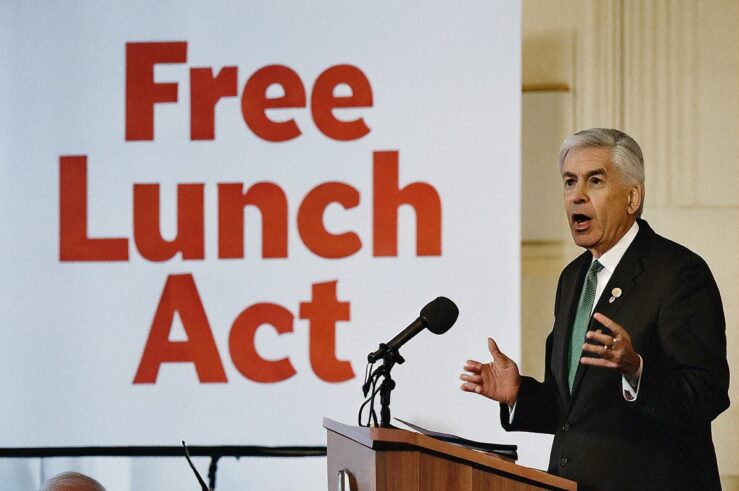So Dr. Miles is dead. May he rest in peace.
No great surprises in the majority opinion in Leegin. Justice Kennedy, quite rightly, emphasized points we have asserted numerous times on this blog. Most notably:
The per se rule should be reserved for practices that are always, or almost always, anticompetitive. The common law nature of Sherman Act jurisprudence contemplates that courts will grow in their knowledge of the economic effects of various practices. When substantial experience reveals that a practice is almost always anticompetitive, application of the per se rule to that practice is warranted. By the same token, when experience and our developing understanding of economics indicates that a previously condemned practice frequently has procompetitive effects, a more probing method of analysis (i.e., some version of the rule of reason) is appropriate. The rule should be allowed to change in both directions: from rule of reason to per se and from per se to rule of reason. We said that here and here.
Vertical resale price maintenance (VRPM) is not always or almost always anticompetitive. There are lots of procompetitive justifications for the practice — e.g., encouragement of point-of-sale services by avoiding free-riding among dealers, facilitating entry of a new firm/brand by allowing manufacturers to induce retailers with a guaranteed mark-up, encouraging output-enhancing retailer services when it’s difficult for the manufacturer to draft and enforce contracts that would require performance of those services. We said that here and here.
While VRPM may be anticompetitive, anticompetitive effect is unlikely, and it’s fairly easy to identify those instances of VRPM that are likely to cause anticompetitive harm. For example, facilitation of dealer cartels — probably the biggest anticompetitive threat posed by VRPM — cannot occur unless (1) dealers are likely to seek a VRPM policy (a condition that will occur only if there aren’t lots of producers of the product at issue or all, or most of the producers impose VRPM), and (2) producers are likely to give in to dealers’ requests for a VRPM policy (a condition that will occur only if the retailers seeking VRPM have market power, and vertical integration into the retail market is impracticable for the producers). Because anticompetitive effect is unlikely and can occur only when certain easy-to-identify market structures exist, rule of reason treatment is appropriate. We said that here.
Evidence purporting to show that VRPM increases retail prices is not determinative. Putting aside the strength of the evidence (which is pretty weak), it is unpersuasive because antitrust is concerned with maximizing consumer welfare, not just minimizing prices. If the higher prices are accompanied by enhanced services that consumers value more than the incremental price increase, then consumer welfare is enhanced despite the higher prices. We said that here.
The 1975 Consumer Goods Pricing Act, which repealed a 1937 statute permitting states to authorize VRPM, does not indicate a congressional intent to retain the per se rule. The 1937 statute effectively permitted states to provide per se legality for VRPM schemes. In repealing the Act, the 1975 Congress again subjected RPM to antitrust scrutiny, but it did not mandate a particular standard to govern such scrutiny. Instead, it contemplated that the standard would evolve with judicial understanding of the practice. Had Congress desired to permanently enshrine the per se rule for VRPM, it could have done so. We said that here and here.
***
OK, enough with the obnoxious “We called its.” What of Justice Breyer’s dissent?
I’m so disappointed. I’ve always liked Breyer on regulatory matters. His 1982 book, Regulation and Its Reform, is a classic. It introduced the notion of “regulatory mismatch” — the idea that regulators frequently respond to particular market failures with regulatory interventions that are better suited to other types of market failure (e.g., they impose bans, which might be appropriate for externality-causing conduct, to remedy information asymmetries, which are better addressed via disclosure rules). It also emphasized the importance of adopting the least restrictive regulatory alternative and leaving things, as much as possible, to private ordering.
Breyer’s incredibly unpersuasive opinion (e.g., “The Consumer Federation of America tells us that large low-price retailers would not exist without Dr. Miles” — Dump your Wal-Mart stock!) basically makes three points: (1) VRPM can be anticompetitive, and we’re not sure how often it’s procompetitive; (2) it’s too hard for courts to separate the procompetitive sheep from the anticompetitive goats, so an easy-to-administer per se rule is appropriate; and (3) stare decisis concerns call for adherence to a precedent as old as the good Doctor.
These are not cogent arguments.
With respect to the first, no one denies that VRPM can be anticompetitive (Justice Kennedy admits as much). The question is not whether it’s anticompetitive more often than it’s procompetitive. Instead, the question is whether it’s always or almost always anticompetitive. No honest and competent economist believes that’s the case. In stating that he “can find no economic consensus” on how often VRPM’s procompetitive benefits “occur in practice,” Justice Breyer is putting the burden on rule of reason advocates to produce rigorous empirical studies documenting various procompetitive effects. That’s backward. The rule of reason is the default analysis for trade restraints, so the burden should be on per se advocates to prove that VRPM is always or almost always anticompetitive. There’s no way they could discharge that burden, and Breyer knows it.
Moreover, even if there’s “no economic consensus” on precisely how often various procompetitive effects occur, there’s consensus (or near consensus) on the following points: (1) manufacturers want to sell as much of their stuff as they can; (2) all else being equal, high retail mark-ups will lead to fewer sales (and thus less profit for manufacturers); (3) manufacturers don’t get to keep retail mark-ups — those go into the retailers’ pockets; (4) ergo, a manufacturer generally will not want high retail mark-ups unless the dealer conduct they generate makes the manufacturer’s product more attractive to consumers, and that enhanced attractiveness is enough to offset the higher price the consumer must pay; and (5) the conditions under which a mandated resale price could facilitate a dealer or manufacturer cartel are narrow, infrequent, and easy to identify. (See here for more explanation of that last point.) Surely this is enough to warrant a conclusion that VRPM is usually procompetitive — a conclusion that’s well beyond what’s necessary to justify rule of reason treatment.
As for Breyer’s second point about administrability, we see courts engage in more probing analyses all the time. With respect to other “mixed bag” practices (i.e., practices that can have both pro- and anti-competitive effects), courts have developed easily administrable, “structured” rule of reason analyses. Consider, for example, data exchanges among competitors. Rule of reason adjudication has produced a relatively simple analysis that determines legality on the basis of the structure of the market at issue and the nature of the information exchanged. This easy-to-administer analysis has evolved because courts have had the freedom to develop a common law analysis that is rooted in economic realities. Affording rule of reason treatment to VRPM will permit courts to develop a similar economically informed, structured rule of reason analysis for that practice. Indeed, Justice Kennedy’s decision highlights a number of discrete factors that will undoubtedly become a part of the structured rule of reason that eventually emerges.
Finally, stare decisis concerns do not justify continued adherence to Dr. Miles‘s outmoded rule. First, this is not a typical “statutory” case. Justice Breyer emphasizes that stare decisis is particularly important for statutory precedents because Congress can change outcomes it doesn’t like. While that’s true, Congress has made clear from the get-go that the Sherman Act is, in essence, a delegation to the courts to craft a common law of trade restraints. You can see this from the language of the statute itself — it’s ridiculously short, it fails to define any of the key terms (e.g., it helpfully defines “person” but not “combination in the form of trust or otherwise,” “restraint of trade,” or “monopolize”), and it uses terms from the then-existing common law (e.g., “restraint of trade”). Because Congress has really delegated to the courts the task of defining trade restraints (and monopolization) stare decisis should play the role it plays in common law cases.
Second, as noted above and here, the very nature of Section 1 jurisprudence contemplates a more limited role for stare decisis: Courts first analyze trade restraints using the rule of reason, and when they have enough experience with a restraint to see that it’s almost always anti-competitive, they adopt an administratively efficient per se rule and are not hindered by prior decisions applying the rule of reason. By the same token, stare decisis should not prohibit movement in the opposite direction — i.e., from per se to rule of reason. Otherwise, we end up with an undesirable “ratchet effect.” As Herbert Hovenkamp recently explained in The Antitrust Enterprise: Principle and Execution (p. 118-19):
[K]nowledge about the competitive effects of business practices must be regarded as a two-way street. Just as increased judicial experience with a practice can lead judges to conclude that it is virtually always anti-competitive and can be disapproved after a truncated inquiry, judicial experience can also reveal the opposite.
Finally, there are no serious “reliance” interests at stake here. What resources have been irretrievably committed on the assumption that manufacturers won’t set resale prices? Breyer mentions (1) “massive amounts of advice that lawyers have provided their clients, and untold numbers of business decisions those clients have taken in reliance upon that advice”; (2) investments by discount distributors (and others associated with those distributors — “What about malls built on the assumption that a discount distributor will remain an anchor tenant? What about home buyers who have taken a home’s distance from such a mall into account?”); (3) Congress’s passage of the 1975 Consumer Goods Pricing Act.
Consider each. First, advice by lawyers. Every change in precedent renders past advice moot, so that’s not the sort of reliance interest that should concern courts. (Moreover, the advice-giving itself is a sunk cost, and lawyers are benefited, at least in the short run, from a change in precedent.)
What about “business decisions” such as “investments by discount distributors”? It’s unlikely there will be much sacrifice here. As explained above, manufacturers are going to want higher retail mark-ups, which reduce sales (all else being equal), only if those higher mark-ups lead to point-of-sale services that are worth more to consumers than the incremental price increase. The vast majority of goods sold in discount stores are not the sorts of products where the attractiveness of enhanced point-of-sale services will offset increased prices. The few products that do disappear from the shelves of discount retailers can easily be replaced by other products. Americans like cheap (and manufacturers know that), so there’s little danger discounters are going to run out of things to sell.
Finally, Congress’s “reliance” in 1975. Breyer insists that “enacting major legislation premised upon the existence of [the per se rule against VRPM] constitutes important public reliance upon that rule.” Really? As noted, the 1975 Congress simply said that VRPM should be subject to antitrust scrutiny — as it will be even after Leegin — not that it should be per se illegal. Had Congress intended to mandate a particular mode of antitrust analysis, it certainly could have done so. We can’t really infer “important public reliance” on Dr. Miles‘s per se rule from Congress’s decision to remove antitrust immunity from a class of conduct. More importantly, the majority’s ruling can be easily “fixed” if Congress does, in fact, believe VRPM should be condemned absolutely. (And with this Congress, who knows.)
***
In sum (is anyone still reading at this point?!), yesterday was a pretty good day for antitrust and for TOTM. I’m a bit disappointed in my man Breyer, but I still give him credit for injecting a bit of rigor into regulatory analysis. I’m also willing to cut him a little slack because much of his reasoning is based on a concern about the administrability of the antitrust laws — a concern I share. In other contexts (discussions regarding how to evaluate bundled discounts), I have quoted Justice Breyer’s words from Barry Wright:
Unlike economics, law is an administrative system the effects of which depend on the content of rules and precedents only as they are applied by judges and juries in courts and by lawyers advising their clients. Rules that seek to embody every economic complexity and qualification may well, through the vagaries of administration, prove counter-productive, undercutting the very economic ends they seek to serve.
The first sentence of that passage appears almost word for word (and without citation, interestingly enough) in Justice Breyer’s Leegin dissent. Of course, there’s a difference between “seek[ing] to embody every economic complexity and qualification” (which many of the anti-bundling folks do) and seeking to recognize a near economic consensus (as the Leegin majority does). Moreover, it’s likely that the structured rule of reason emerging from Leegin will be relatively easy for judges, juries, and counselors to apply. In addition, there’s a difference between citing excessive complexity and inadministrability as grounds for a liberal policy that defers to private ordering (my position in the bundled discount context) and citing such complexity/inadministrability to justify an overly restrictive approach. Still, though, I admire Justice Breyer’s desire to make antitrust administrable.
And, of course, I’m most pleased that I didn’t have to eat my hat.




